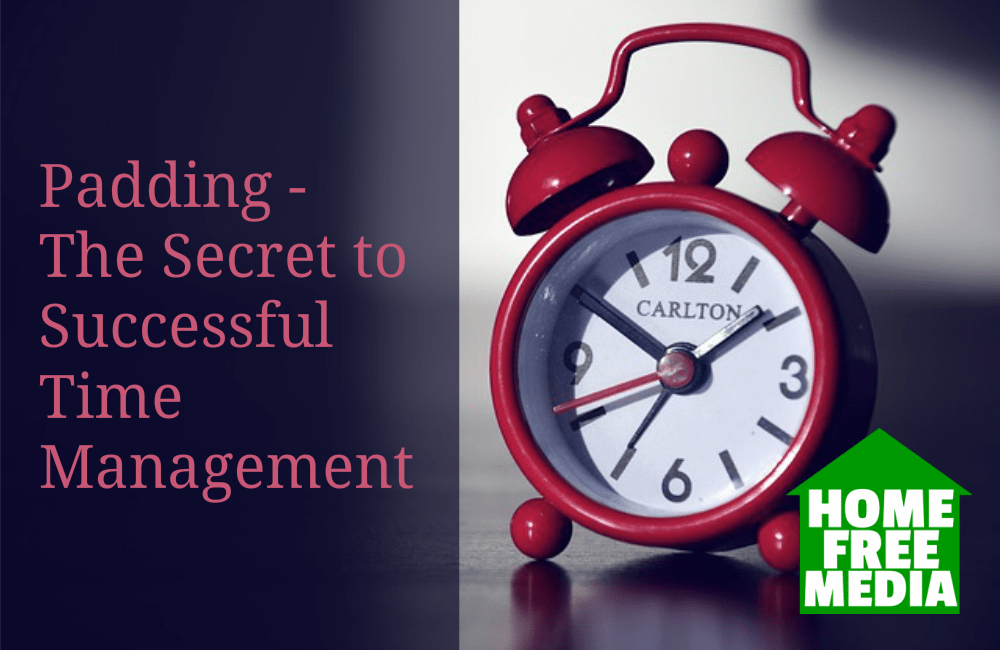
Padding – The Secret to Successful Time Management
As an entrepreneur you’re often asked to estimate how long a particular task or project might take. Whether you are doing projects for yourself or for others, it’s important to get this time estimate right. You want to overestimate or get it just right, but you never want to underestimate.
Clients are thrilled to read an invoice and discover that something you quoted was less than they thought it would be because it took you less time. But, they are never excited to hear that you underestimated the time and you’re going to have to charge more for the project. Even worse for you is if you charge by the project – poor time estimates can cause you to end up making a lot less money than you planned on making for your time.
The way around these problems is called “padding”. Some people will argue that padding is not a very professional way to manage your time but the truth is, it’s one of the few ways to get hold of your calendar and ensure that you have time to do everything on time and on budget. There is nothing whatsoever unprofessional about padding time estimates, as long as next time you bid on the same type of project you don’t pad the activity as much. Now you know how much time it really takes.
In addition, you want your clients and your business to benefit from the time padding. Your client ends up paying less than the estimate because it took less time. You get to move on early to the next project because the first one took less time. Thus, you become more productive by padding the time. Time estimates should be based on some sort of reality and not just pulled out of the sky. Therefore, if you do a good job at keeping track of your time, you’ll be able to make more accurate estimations of time on future projects.
Another word for time padding is buffer time. If you are a single entrepreneur, especially if you are also raising a family, it’s a good idea to give yourself buffer time for any project due dates. For instance, if a client product is absolutely due by May 28th, 2016 at 6 pm, on your own calendar you might want to make it due March 26th instead. This will give you time to deal with unforeseen issues such as a power outage, a sick child, or something else causing problems with your schedule.
An important factor to remember when padding time or when adding a buffer of time to any proposal or project, is to be upfront and honest. Give the date, stating that this includes a contingency but that the project could be done before that. Many business people add a set percentage of padding such as 10% to 20% to every project just to be safe. This is fine, as long as you realize it is buffer to allow for issues.
 A Message from Norma...
A Message from Norma... In case you're curious, I started working online in 1997 - in the dinosaur days of the internet. My purpose here at HomeFreeMedia is to help YOU build the business of your dreams by developing and recommending top quality products and tools. This will also result in profit and affiliate commissions for me, so we both win!
Sign up here for news and special offers.
Please note that some products are not exclusive to HomeFreeMedia so that you don't make duplicate purchases.